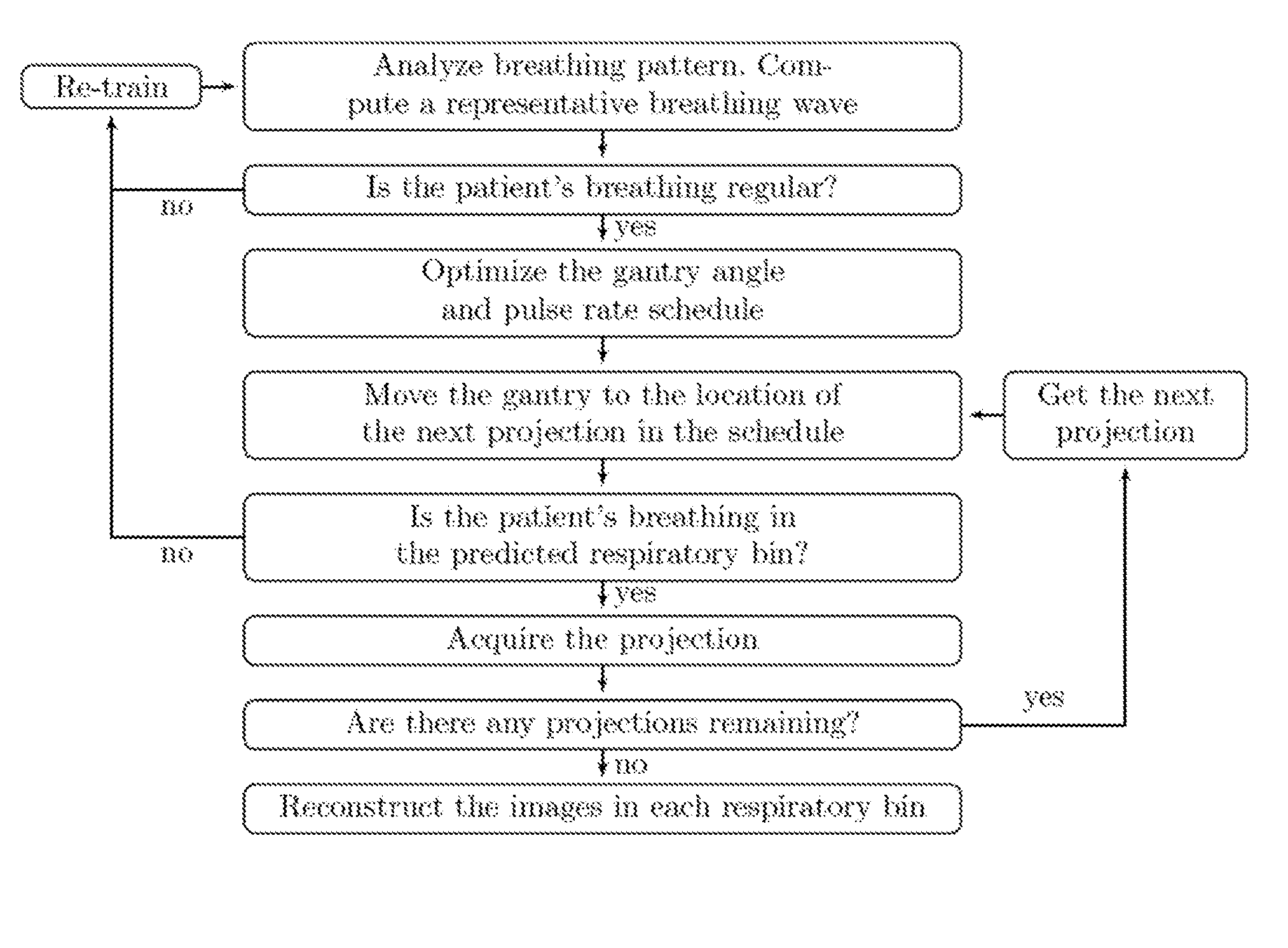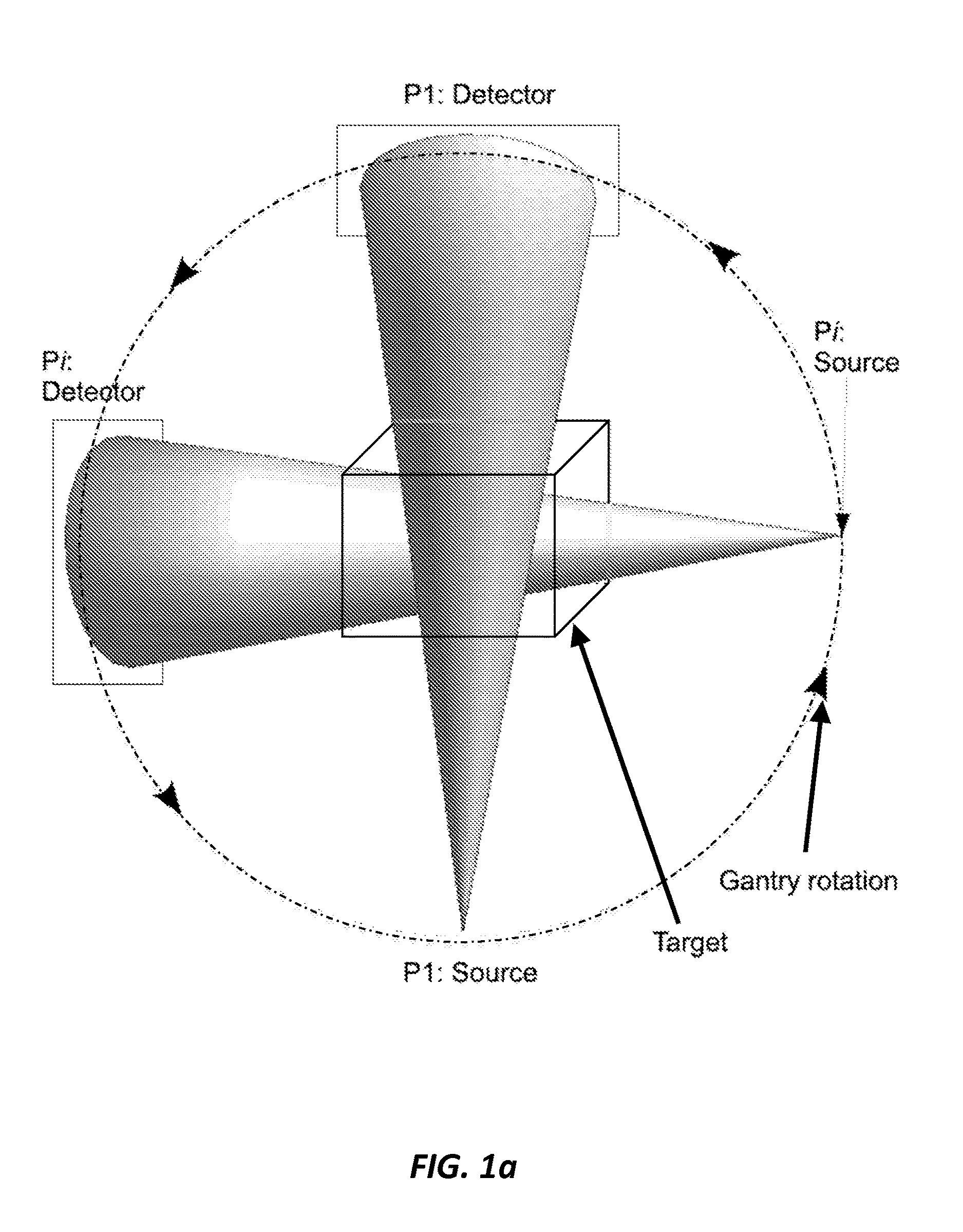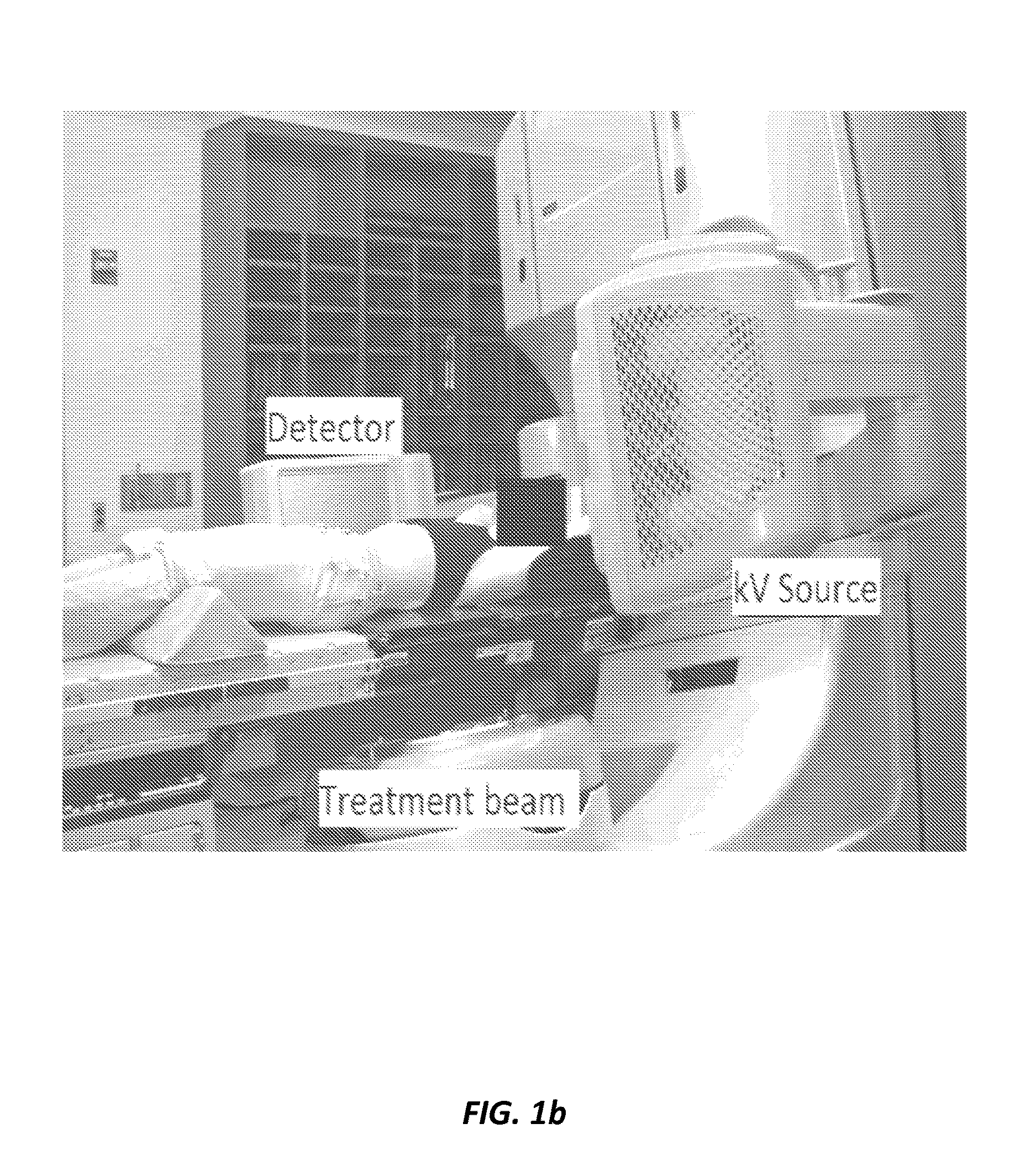Modulating gantry rotation speed and image acquisition in respiratory correlated (4D) cone beam CT images
a technology of gantry rotation speed and image acquisition, which is applied in the field of radiotherapy, can solve the problems of blurry image reconstruction, increased the likelihood that some of the radiation targeted at the tumor will irradiate healthy lung tissue, and slow image reconstruction process, so as to minimize the time required, minimize the angular separation, and maximize the effect of image quality
- Summary
- Abstract
- Description
- Claims
- Application Information
AI Technical Summary
Benefits of technology
Problems solved by technology
Method used
Image
Examples
Embodiment Construction
[0044]Four Dimensional Cone Beam Computed Tomography (4DCBCT) images of lungs are rarely used by radiotherapists to position a patient for treatment because of blurring as a result of respiratory motion. One embodiment of the current invention provides a novel Mixed Integer Quadratic Programming (MIQP) model for Respiratory Motion Guided-4DCBCT (RMG-4DCBCT), which can be used to obtain 4DCBCT images of the lungs and lung tumors by a radiotherapist in the treatment room prior to treatment. RMG-4DCBCT regulates the gantry angle and projection pulse rate, in response to the patient's respiratory signal, so that a full set of evenly spaced projections can be taken in a number of phase, or displacement, bins during the respiratory cycle. In each respiratory bin, an image is reconstructed from the projections to give a 4D view of the patient's anatomy so that the motion of the lungs, and tumor, can be observed during the breathing cycle. A solution to the full MIQP model in a practical am...
PUM
 Login to View More
Login to View More Abstract
Description
Claims
Application Information
 Login to View More
Login to View More - R&D
- Intellectual Property
- Life Sciences
- Materials
- Tech Scout
- Unparalleled Data Quality
- Higher Quality Content
- 60% Fewer Hallucinations
Browse by: Latest US Patents, China's latest patents, Technical Efficacy Thesaurus, Application Domain, Technology Topic, Popular Technical Reports.
© 2025 PatSnap. All rights reserved.Legal|Privacy policy|Modern Slavery Act Transparency Statement|Sitemap|About US| Contact US: help@patsnap.com



